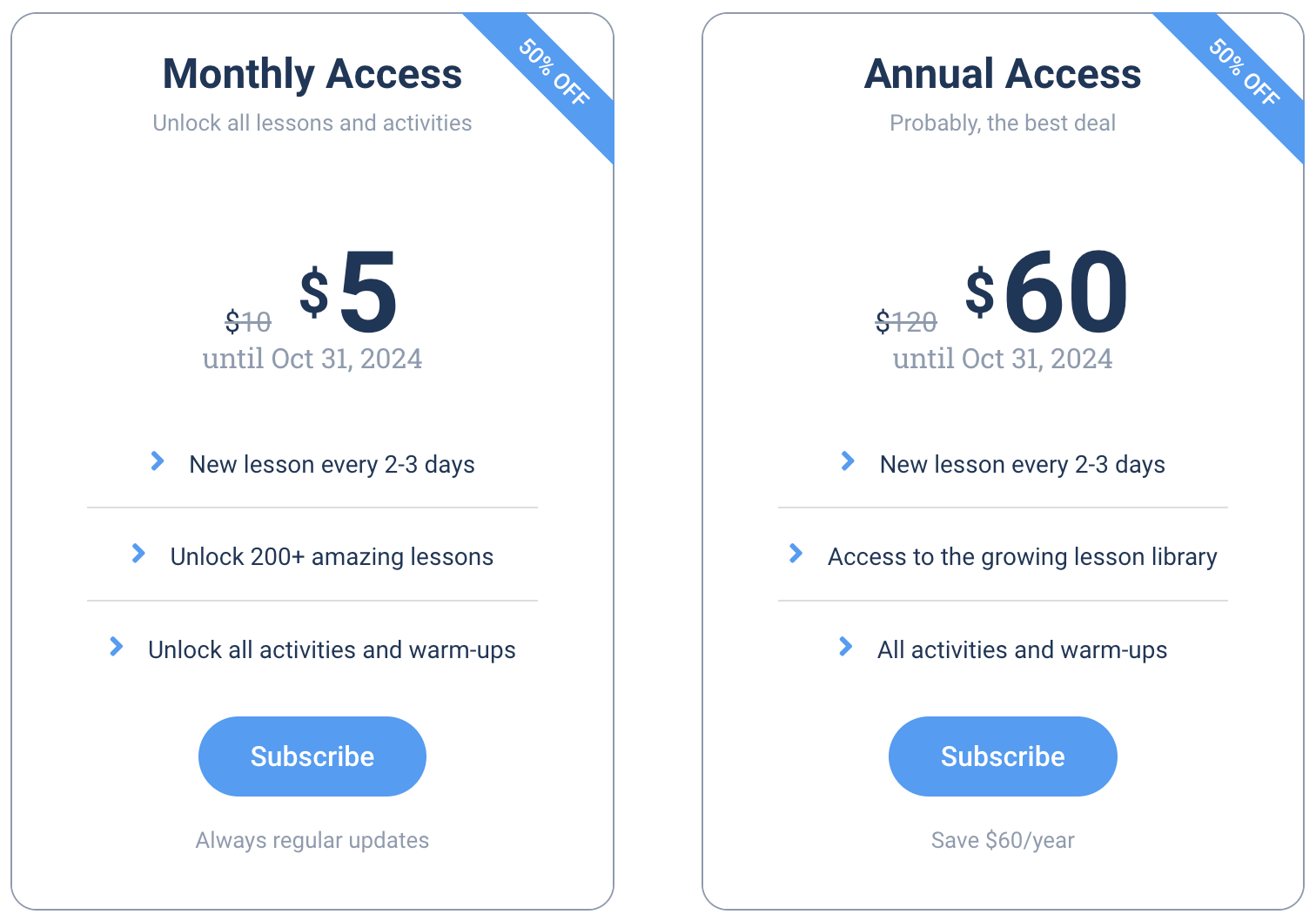Explore our category Work to find more useful stuff for your ESL classroom!
Table of Contents
A2 Level (Elementary)
- What can you see in an office?
- What do people do in an office?
- How do you say “computer” in English?
- What is a “meeting”?
- Describe a chair you can see in an office.
- What color are the walls in an office?
- Can you name three things you can find on a desk?
- What is a “coffee break”?
- How do people work together in an office?
- Do you like the idea of working in an office? Why?
- What is the difference between a “desk” and a “table”?
- What do you think “teamwork” means?
- How often do people in an office talk to each other?
- What is a “deadline”?
- Can you name a job that people do in an office?
- What do you wear to an office?
- What time do people start and finish work in an office?
- Why are plants important in an office?
- What do you think an “open plan” office is?
- How do you ask for help in an office?
B1 Level (Intermediate)
- Discuss the benefits of having an open plan office.
- How does office design affect productivity?
- Why is it important to have breaks at work?
- Discuss the role of technology in the modern office.
- How can offices be made more environmentally friendly?
- What are the challenges of working in a large team?
- How do you think office culture impacts employees?
- Describe a perfect office environment for you.
- What is the importance of having ergonomic furniture in the office?
- How does lighting in an office affect your mood and work?
- Discuss the concept of a “flexible working schedule.”
- What are some ways to improve communication in an office?
- How important is personal space in an office setting?
- Discuss the role of a manager in an office.
- How can offices accommodate different working styles?
- What is a coworking space, and how does it differ from a traditional office?
- How do offices maintain security and privacy?
- Discuss the impact of remote work on office culture.
- What are some common office etiquette rules?
- How do team building activities benefit an office environment?
B2 Level (Upper-Intermediate)
- Analyze the impact of office layout on employee interaction.
- Discuss the psychological effects of office design on employees.
- Evaluate the importance of sustainability in office practices.
- Examine the role of leadership in fostering a positive office culture.
- Discuss the advantages and disadvantages of remote working versus office work.
- How do office environments adapt to technological advancements?
- What measures can offices take to ensure employee wellness?
- Debate the necessity of formal dress codes in modern offices.
- How can offices balance between collaborative spaces and the need for privacy?
- Examine the effects of globalization on office culture and design.
- Discuss strategies for managing stress in the office.
- Evaluate the role of office amenities in employee satisfaction.
- How does office noise affect productivity, and what solutions exist?
- Discuss the concept of hot-desking and its effectiveness.
- What is the future of office spaces post-pandemic?
- How can offices foster creativity and innovation among employees?
- Examine the challenges of maintaining a diverse and inclusive office environment.
- Discuss the impact of artificial intelligence on office jobs.
- What are the ethical considerations in monitoring employees in the office?
- How do cultural differences influence office dynamics?
C1 Level (Advanced)
- Critique the evolution of office designs over the past century.
- Discuss the implications of the gig economy on office spaces.
- Analyze the balance between work-life integration and work-life separation in relation to office design.
- Evaluate the impact of corporate wellness programs in the office.
- Examine the interplay between office design and corporate identity.
- Discuss the potential of biophilic design in enhancing office environments.
- Analyze the role of technology in creating adaptive and responsive office spaces.
- Debate the future role of offices in a digitally connected world.
- Evaluate the significance of community and social interaction in office spaces.
- Discuss the challenges and opportunities of cross-cultural communication in global offices.
C2 Level (Proficiency)
- Analyze the sociological impact of office culture on modern society.
- Critique the role of office spaces in shaping organizational hierarchies.
- Discuss the influence of digital nomadism on traditional office structures.
- Examine the ethical implications of surveillance and privacy in the workplace.
- Debate the concept of the office as a social construct in the 21st century.
- Analyze the impact of architectural design on employee behavior and productivity.
- Discuss the role of offices in fostering innovation and creativity.
- Evaluate the future of workspaces in light of advancing automation and AI.
- Critique the effectiveness of open vs. closed office layouts in fostering productivity.
- Analyze the impact of global economic shifts on office culture and design.

